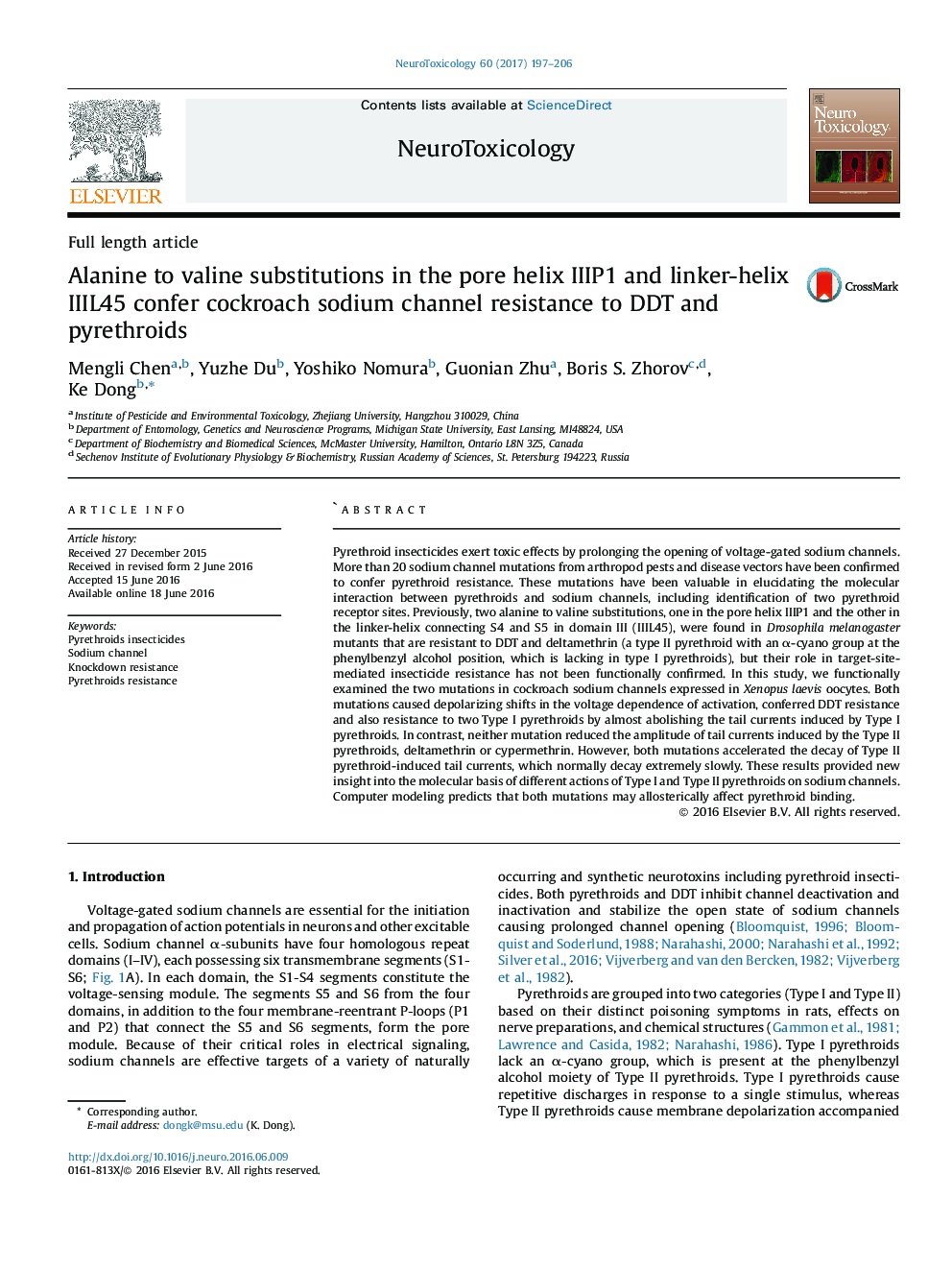| Article ID | Journal | Published Year | Pages | File Type |
|---|---|---|---|---|
| 5560840 | NeuroToxicology | 2017 | 10 Pages |
â¢Two alanine to valine substitutions were associated with pyrethroid resistance.â¢One mutation is in the pore helix IIIP1 and the other is in the linker-helix connecting S4 and S5 in domain III.â¢Both mutations reduced the amplitude of tail currents induced by Type I pyrethroids.â¢Both mutations accelerated the decay of tail currents induced by Type II pyrethroids.
Pyrethroid insecticides exert toxic effects by prolonging the opening of voltage-gated sodium channels. More than 20 sodium channel mutations from arthropod pests and disease vectors have been confirmed to confer pyrethroid resistance. These mutations have been valuable in elucidating the molecular interaction between pyrethroids and sodium channels, including identification of two pyrethroid receptor sites. Previously, two alanine to valine substitutions, one in the pore helix IIIP1 and the other in the linker-helix connecting S4 and S5 in domain III (IIIL45), were found in Drosophila melanogaster mutants that are resistant to DDT and deltamethrin (a type II pyrethroid with an α-cyano group at the phenylbenzyl alcohol position, which is lacking in type I pyrethroids), but their role in target-site-mediated insecticide resistance has not been functionally confirmed. In this study, we functionally examined the two mutations in cockroach sodium channels expressed in Xenopus laevis oocytes. Both mutations caused depolarizing shifts in the voltage dependence of activation, conferred DDT resistance and also resistance to two Type I pyrethroids by almost abolishing the tail currents induced by Type I pyrethroids. In contrast, neither mutation reduced the amplitude of tail currents induced by the Type II pyrethroids, deltamethrin or cypermethrin. However, both mutations accelerated the decay of Type II pyrethroid-induced tail currents, which normally decay extremely slowly. These results provided new insight into the molecular basis of different actions of Type I and Type II pyrethroids on sodium channels. Computer modeling predicts that both mutations may allosterically affect pyrethroid binding.
Graphical abstractDownload high-res image (121KB)Download full-size image
